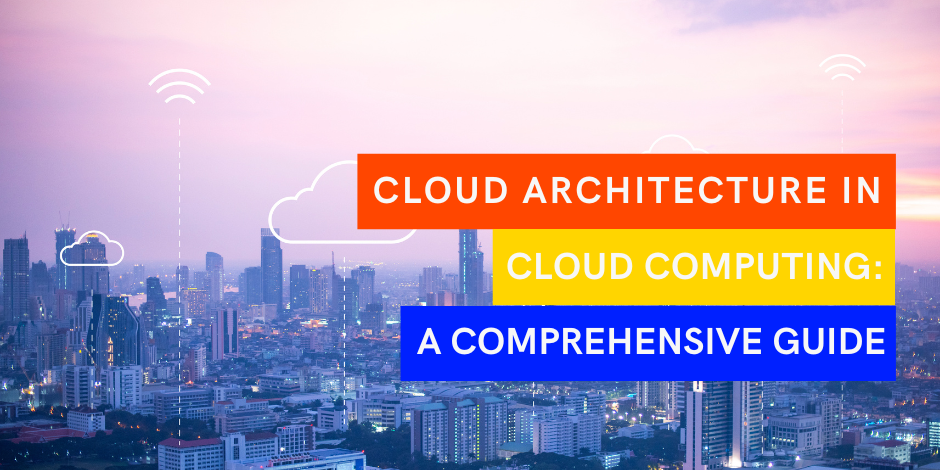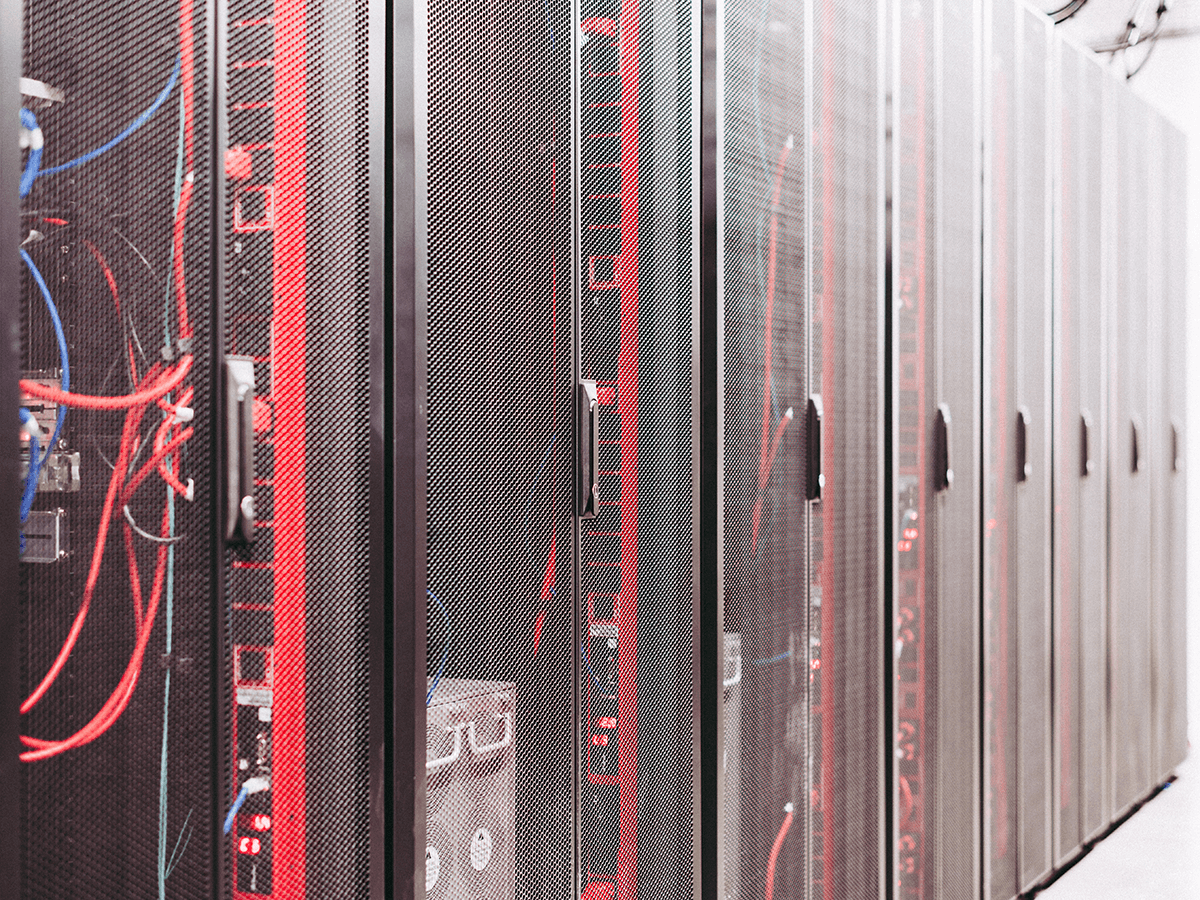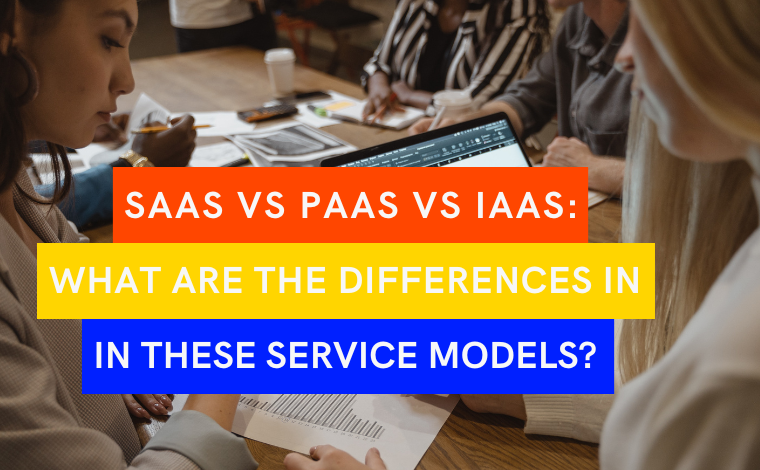Cloud Architecture in Cloud Computing: A Comprehensive Guide

Stay Informed With Our Weekly Newsletter
Receive crucial updates on the ever-evolving landscape of technology and innovation.
Cloud architecture in cloud computing refers to the basic technology systems that come together to make a cloud system enabling businesses to provide their services over large distances and work with big data sets without any issues. Several cloud computing components comprise a firm’s overall cloud architecture, including a network, a delivery model (cloud-based), a front-end platform, and the back-end platform.
It is essential to work on each component and pick the right cloud deployment method to get the best results from your cloud resources and provide the ideal experience to the end user. In this comprehensive guide, we will look at the need for cloud architecture in cloud computing, the architecture’s primary layers, and the main types of cloud architecture design.
What is the need for cloud architecture in cloud computing?

Cloud architecture helps provide a structure to cloud computing solutions, freeing businesses from any reliance on physical data centers and any other infrastructure. The right architecture improves the business-customer relationship by optimizing the user experience at the front end of the cloud computing solution while also optimizing back-end operations with servers, solutions, and storage.
It also helps reduce operational costs as businesses can shift all of their resources to the public cloud and utilize different AI solutions to improve the efficiency and security of data transfers over virtual networks. In addition, it helps resolve latency issues and allows businesses to process data and scale operations seamlessly.
Cloud architectures help build a better working and collaborative environment for remote teams and allow businesses to update their services and cloud security with a few clicks. This flexibility with operations gives businesses a competitive edge, and they can recover from security mishaps more easily. Let’s take a more detailed look into what defines cloud computing architecture.
The front end of cloud architecture
First, we have the front end of the cloud architecture in cloud computing that comprises the user interface and the applications that the end-user engages with. This is an integral part of cloud services and satisfies the consumer’s needs to perform different tasks.
The front end primarily comprises the cloud infrastructure, a GPI, and several other components like databases and virtualization tools.
The back-end of cloud architecture

As the larger part of the cloud architecture, the back end monitors the data processes and programs that help client-side applications perform seamlessly. Several components define the back end of the cloud computing architecture, including the services like development environments and software or cloud platform applications.
The back end helps protect the business from security threats by making the infrastructure secure for all stakeholders using SIEM solutions or virtual firewalls.
Other components, like storage servers, store different data types, including graphic files and documents. The correct storage choice for a business will depend on operational requirements and the size of the customer base. Some popular storage service options include Microsoft Azure Storage and Amazon S3.
What are the common types of cloud architecture?
Companies can adopt public, private, multi-cloud, or hybrid cloud systems for their cloud computing systems. However, when a company migrates its operations to a cloud-based setup, several things must be considered before picking out the best cloud computing architecture for its needs, including the range of its business operations, the current budget, and cloud storage requirements.
In the following sections, we will discuss each other cloud architecture options in more detail:
Private cloud architecture
Private cloud architecture is a solution owned, used by, and meant for only one firm’s operation. It is usually hosted within business premises but can also be hosted in external databases. The key point with this architecture is to have complete control over your cloud sources, and this cloud computing architecture will ensure that your needs are met.
It is possible to hand over the management of a private cloud to an external service provider. Still, a company’s technical team can also work on it using management software. Another benefit of this cloud architecture is the increase in security. Yet, it also has drawbacks, primarily regarding the cost of setting up a dedicated system like this for a small business, which will likely take up a considerable amount of their budget, with extra expenses for maintenance and management.
Public cloud architecture
With a public cloud architecture, on the other hand, the computing resources can be shared between multiple services and organizations, making it a cost-effective and more accessible option for several businesses. In addition, this architecture is designed to keep the operations of each user separate, and the host ensures excellent bandwidth and network connectivity to ensure effective operation for every tenant.
The third-party provider that controls the public cloud architecture is bound to secure the data on their networks. As a result, it frees up time for entrepreneurs and technical teams to focus on other business tasks that will help them scale and improve operations.
Hybrid cloud architecture
The hybrid cloud is the perfect combination of the public and private cloud, and it allows a business to work in different environments while reaping the benefits that come with each of them.
Suppose a business wishes to handle and personally control all of its private and sensitive data while reaping the cost-effective and scalability benefits of the public cloud. In that case, a hybrid solution is a way to go. This also serves a purpose in changing business environments wherein different factors might have businesses shifting between multiple environments.
Multi-cloud architecture
Lastly, the multi-cloud model is becoming increasingly popular with modern businesses as business operations are distributed between multiple public clouds simultaneously, aiming to lower costs and improve operational efficiency.
As with most technical solutions, this is a step forward for businesses to scale their operations on the cloud without worrying about higher costs. In addition, it allows entrepreneurs to make more innovative decisions.
What are the main layers of cloud computing?
Several layers of technology and software solutions make the cloud a reality for multiple businesses worldwide, including the IaaS, PaaS, SaaS, and BPO models. You can read more about their differences in our article here.
Let’s take a more detailed look into each of these to understand how they fit in with cloud computing and how they help businesses:
IaaS (Infrastructure as a Service)
The first layer of the cloud that can be used as a service is the infrastructure, and it is used to deliver networking and storage resources over the cloud. This layer comprises hardware and some network, but it is not like a regular hosting server.
With IaaS, businesses can scale operations and virtualize their data-related processes. By shifting your entire server and database to the cloud, you save on costs with physical data centers. It is possible to upgrade the solution you are using as you scale your operation without paying any high upfront costs.
PaaS (Platform as a Service)

For the second layer of the cloud, we have PaaS, which is primarily used to develop software solutions. Again, there are several benefits to combining it with IaaS. Still, a few differences exist, like how much control a management team might have on the overall cloud computing solution.
After building the cloud infrastructure with the IaaS, businesses can use the flexible tools of the PaaS layer to develop, test, and host the final solutions.
SaaS (Software as a Service)
On the third layer of a cloud architecture comes the software, and this layer is called the SaaS. The use of SaaS models precedes modern cloud computing solutions. Still, within a cloud architecture, we see it on the front end with the user interface where a customer can engage with the solution the business provides.
BPO (Business Process Outsourcing)

While only some agree that BPO qualifies as a cloud layer, it is at the top of the chain and has multiple applications for businesses that use cloud computing. For example, BPO has applications in concepts like customer service, and it is used to outsource and delegate tasks to different companies.
By utilizing this layer, the primary client can focus on other activities that improve business operations, and the outsourced activities are efficiently dealt with by the selected businesses.
Conclusion
Cloud computing with the right cloud architecture is a powerful tool for businesses of all sizes. An internet connection helps them store, access, and use data regardless of location or size constraints. With the use of IoT and the advances in AI and machine learning, this method of computing will continue to gain importance in the coming years.
If you want to start with a good understanding of cloud computing to advance your career or build your business further, you must develop a strong knowledge of core AI and Data Science concepts. If you want to start your journey in tech with a strong support system, book a career consultation with one of our experts and find the best plan and course for your needs!


